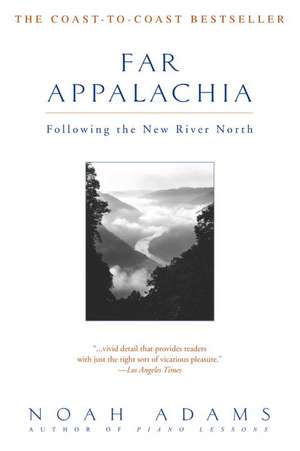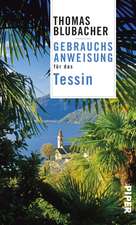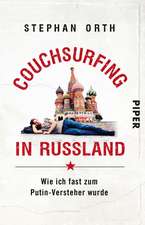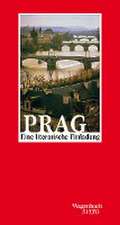Far Appalachia: Following the New River North
Autor Noah Adamsen Limba Engleză Paperback – 28 feb 2002
Noah Adams has Appalachia in his blood. A native of eastern Kentucky, he comes to the headwaters of the New River not just in search of adventure but to better understand his own unique heritage. Following the New River from its mile-high source on North Carolina's Snake Mountain to its West Virginia mouth, Adams travels by Jeep and by bicycle, by foot and, most thrillingly, by white-water raft to explore the history, natural beauty, and fascinating characters waiting around every bend and turn.
Distilling history from legend, Adams tells of men and women whose lives crossed the New River before him: Daniel Boone, fleeing his farming family in search of wilderness; Cherokee Indians driven west on their Trail of Tears; and the ill-fated men who traveled thousands of miles to work on the Hawk's Nest Tunnel, making a fortune for a company while their lungs filled with deadly silica dust. And along the way Adams follows the echoes of his own distant heritage, interweaving his river journey through Appalachia with yet another voyage, thousands of miles away.
With eloquence and compassion, Noah Adams paints a luminous portrait of a land and a people as richly vital and complex as America itself. At the same time, his quietly personal chronicle captures the sheer magic of the flowing waters: their sound, their eddies, their utter unpredictability. A vibrant and unforgettable read, Far Appalachia mesmerizes and haunts like the bluegrass music that still rings through the mountains and valleys in which it was born.
Preț: 134.84 lei
Nou
Puncte Express: 202
Preț estimativ în valută:
25.81€ • 26.84$ • 21.30£
25.81€ • 26.84$ • 21.30£
Carte disponibilă
Livrare economică 24 martie-07 aprilie
Preluare comenzi: 021 569.72.76
Specificații
ISBN-13: 9780385320139
ISBN-10: 0385320132
Pagini: 256
Dimensiuni: 137 x 208 x 15 mm
Greutate: 0.3 kg
Editura: DELTA
ISBN-10: 0385320132
Pagini: 256
Dimensiuni: 137 x 208 x 15 mm
Greutate: 0.3 kg
Editura: DELTA
Notă biografică
Noah Adams is a co-host of NPR's All Things Considered. He lives with his wife, Neenah Ellis, a freelance journalist, in Takoma Park, Maryland.
From the Hardcover edition.
From the Hardcover edition.
Extras
SNAKE MOUNTAIN
I had a dream one night, not long ago, that I saw Doc Watson canoeing over a mountain in the dark. He was in the middle of the boat and doing some strong paddling. His head was tilted down a little bit, to the right. You couldn't tell he was blind; his eyes were intent. There was moonlight in his hair.
Mr. Watson was coming off the crest of a ridge riding a fast, splashing current. I still haven't questioned how the canoe got over the mountain or how the river contrived to be running uphill. The joy of the dream was that he was out for a ride--sensing the full moon, leaning into each stroke with the water cold on his arms.
He would be listening to the river's gurgle and plonk and the bell-toned night call of the Carolina wren. He'd recognize the black oak's leaf rustle. And there'd come the faint cry of a baby, from back up in the trees: most likely the wind but some might say a cougar.
The sounds would gather into guitar chords and melody, and later Doc would play someplace in town, play a song like "Deep River Blues," and somebody standing against the back wall would shake his head and say, "It's like he just finds the music in the air."
I recognized the terrain of this dream: Snake Mountain reaches above five thousand feet in a corner of North Carolina and it would stand clear in a moonlit sky. Doc Watson lives in Deep Gap, not far away.
He grew up not being able to see but he heard the very center of music in the bird songs and the wind harmonies in the white pines along the pastures. Once he strung a wire in the barn so that it would sound a C and he could find songs on it. The Grand Ole Opry would be on the radio Saturday nights and later he heard enough rock and roll to be thought of as an electric guitar player but the old-time music held strong.
When all the family would come together after church they'd play the remembered tunes; an uncle would get his fiddle from the truck, one of the girls would lay out a dulcimer. The talk would be of mountains and farming. It was two close centuries ago that a Watson forebear left the Scottish Highlands.
Doc's grandmother, summer afternoons on the front porch, liked to sing hymns as she snapped the green beans for supper:
O, they tell me of a home far beyond the skies, O, they tell me of a home far away; O, they tell me of a home where no storm clouds rise, O, they tell me of an unclouded day.
The North Carolina map in the glove box of my Jeep is a depiction of roads, a drawing of landscapes dominated by highways. Back at the turn of the century a map would feature the rail lines. And earlier still, in Daniel Boone's time, the maps were of waterways--territories defined by the creeks and rivers curving through the hills.
If you squint a bit you can find the New River on the modern state maps, and follow it north. It rises both in Watauga and Ashe Counties, in northwestern North Carolina, then becomes a single line winding into Virginia past Galax, through Radford, and over to the town of Narrows before entering West Virginia and moving up to Hinton, Prince, and Fayetteville, then ending at Gauley Bridge, where the New and Gauley Rivers join as the Kanawha. From there, downstream, run the broad meanderings of the Ohio, the Mississippi.
Move up to a larger-scale map--the U.S. Geological Survey 1:24 000 topographic--and you'll find the actual beginnings of the New (even the houses are shown, as tiny black squares).
The river's origin is divided. Look at the Boone Quadrangle map to find where the South Fork gets its start, up near the town of Blowing Rock. The water comes off the hillside and down through a golf course. It's just below the Blue Ridge Parkway, along the Eastern Continental Divide; rain falling on the other side of the road would head toward the Atlantic.
The golf course outside of Blowing Rock marks the southernmost flow of the New, the farthest from the river's end, and some would call that the source point. Other geographers--the ones I agree with--say the highest source is where you mark the beginning of a river. And that takes us to the Zionville Quadrangle, to locate the North Fork, on Snake Mountain.
One morning in sunshine I drove up a narrow, newly paved road, then a twistier stone-and-dirt path, for a visit with a couple--Dave and Betty Martin--who spend every summer just below Snake Mountain's rounded peak. They have a weathered wooden shed, a dependable garden, nearby spring water, and, at the moment, two dogs.
"Hey there, morning." Dave and Betty had the same crinkly, tanned smile, and gray hair touched with white. It was past nine o'clock and they'd slept late. They wore jeans. They were barefoot. The dogs snuffled and pranced in the drying grass.
The summit of Snake Mountain is at 5,574 feet. Tennessee is on the other side. There are beech trees along the top ridge and sugar and red maples below. The hillside is in pasture, the scattered hay bales--the summer's first cutting--stand drying. Dave Martin sees this with a painter's eye, in pale blues, veiled white, muted greens and browns.
He brought out some of his watercolor work, done on scroll paper with Chinese brushes. The lines circled and soared--clouds became falling water and trees became forest.
Much later, when I was back at home looking at a series of topo maps on the wall, I was reminded of Dave's paintings; the rhythm was the same, the wanderings of the hills and watercourses. The only harsh, nonlyrical lines on the maps were those showing the highways and power lines.
Dave said he'd had a show of his watercolors once, "off the mountain"--an exhibit in the North Carolina city where they live. He was disappointed in the paintings. Vibrancy was lost. The light was off somehow. The next summer he brought them back to Snake Mountain, where they revived.
This year the Martins have been grumbling about the state's decision to pave the back-county road that climbs past the turnoff to their cabin. "What the highway department never tells you is that the gravel roads don't kill people, can't get up enough speed. If a drunk goes off the road he just goes into a fence."
Back down the mountain two miles is a community settled long ago by families that tended to differ.
"Pottertown," Dave says, "has the worst reputation in the hills of people feuding, or shooting their relatives. Up until about ten years ago the police wouldn't come over here except on Sunday afternoons. For us, one of the most interesting things in coming back every spring was finding out who'd been killed. They're still clannish; they tell these stories that happened a hundred years ago and get the young people all fired up. We've made good friends though, and we've always felt safe. Never lost anything, never had anything stolen. Most of the people who would tend to rob you would be afraid to come over here."
The Martins bought their land on Snake Mountain almost thirty years ago and they come up from the city in June. The garden's the first chore. They wouldn't want to bother with a real house, or plumbing. The only light they see at night is flickering thirty miles away on Mount Rogers. Dave figures this is the healthiest place they can be; they never get sick up here.
There are several springs above 4,700 feet, Dave said, that help start the New River's North Fork. " 'Bold springs,' the local people call them." We walked across a field to the "household" spring. The spot was sheltered by several Fraser firs. Dave and Betty had collected rocks to build a catch basin and encouraged spearmint and peppermint and mountain mint. I dipped out some water with a plastic cup and drank most of it, splashing the rest on my face. It held the chill of the rock. The water from this spring would find its way down to the creek, to the rivers, to the Gulf of Mexico, and rise again in the clouds to fall on Snake Mountain.
THREE FORKS
The sycamore tree became my first friend on the river, in the sense that I'd know its name without looking. The gray-green scaly sycamores stand as sentinels along the entire course of the New; often they'll lean far out over the water.
And jewelweed was the first wildflower I identified from a field guidebook. Until October, where there's water flowing, you can usually find jewelweed. They are plants for a hobbit's landscape, with reddish orange blossoms that look like tiny pitchers. You can crush the stems and use the juice against poison ivy. In the fall the seedpods will burst open at a touch and send out a satisfying spray.
It's good to find a color picture in a book that matches what's blooming on the riverbank. But often I wanted to stop the water's flow and wait right in the middle of the stream. I could tell I was paddling past tiny, unseen worlds.
A biologist agreed to help. For Ed Greene it was a chance to leave his office at Appalachian State University and get his feet in the river. We picked a shallow section close to the town of Boone and the ASU campus, just downstream from where the South Fork becomes complete, with the joining of the Middle Fork, East Fork, and Winkler Creek.
We walked a half-mile trail from the parking area to the water, and Ed made sure I noticed the neighborhood trees:
"Wild cherry. There's witch hazel; it can be a bush but it gets to a pretty good size. And you know your white pine. There's another cherry--see the bagworms? They'll hit a cherry more than anything else. Here's a sweet birch. It's a toothbrush tree; just fray this twig there at the end and it works great. Hawthorns there, with the big sharp thorns. Red oak. Lots of black locust; people call it a trash tree and mostly it is, but if you want fence posts that won't rot that's the wood for you."
Ed enjoyed seeing his favorite ferns again. Christmas ferns were bright green under the trees, and he found a hay-scented fern, and the marginal wood fern, with spores on the margins of the leaves. There were lichens with dimpled centers, called Umbilicaria--"If that doesn't look like a bellybutton I don't know what does." Wild mint was about, showy with white blooms. And plenty of bright purple ironweed on the riverbank.
Ed had his pants rolled up, and wore an old pair of running shoes and carried a dip net as we sloshed right into the river--it was only twenty feet across.
I asked him, "What is this green stringy stuff?"
The plant grew in clumps, with tendrils several feet long; you'd see it suspended in the current.
"We just call it riverweed. It has these dense mats with holes inside and there's lots of life hiding in there."
We watched silvery minnows--like tiny airships, fleets of them. They wait in still water, about six inches below the surface--then dash ahead and veer off sharply, still together, as if by telepathic agreement.
The pools are homes for fish and they'll stay close, even when the river is roaring with flash floods. There's a species called the fantail darter that prefers the fast water, living and finding its food right in the rapids. And Ed made a splashing swoop with his net and came up with a blacknose dace. It's about four inches long, gray, with a dark stripe all the way around the nose. I held the fish in my hands. It felt alert and strong.
Many of the fish are in the river because of the insects. In spring the mayfly will hatch and ascend. A trout will see clouds of mayflies rising off the water. Ed said, "An adult mayfly doesn't even have an operational digestive system. They just fly around and mate and lay eggs and die." Unless a trout leaps--in which case they're lunch. Sometimes the mayfly has been tediously crafted by a human and tied to a leader of feathery monofilament--then it's the trout that's threatened.
The mayflies, the caddis flies, the stone flies, spend years in the larval stage. One type of caddis fly will take up a station, say, hidden in the riverweed. Find a home that faces upstream. Spin a silken net that covers the entrance to the hole. The net filters out pieces of leaves or shreds of other insects. The larvae clean the net off and eat the food or else they just eat the whole net and spin another one. Sometimes the larvae will even pull pieces of rock together and spin the web over the crevices.
"They also live under here." Ed pulled up a flat river stone and turned it over. But I couldn't see what he was talking about. "Look, right there. Just a tiny black stone-fly larva." It was barely a spidery smudge on the bottom of the rock. "And there's a caddis fly," Ed said, pushing with his fingernail to make the whitish larva squirm. Some of the larvae will build houses, covering themselves with bits of rock or wood. "You can identify the species by what their houses are made of."
Another rock. Ed said, "There's a stone-fly nymph. In this stage they can get up to two-thirds of an inch long." The black nymph started to run. "There's the two tails, and see, it's got the six legs just like an insect is supposed to have."
The underriver food chain starts at the single-cell level, with algae. Some are called diatoms, and they can be several shades of brown. The diatoms live together in slimy, slippery galaxies--"rock snot," the biologists call them.
The snails love algae and you'll often see a clean path left behind a snail as it eats its way across a rock.
The snails are eaten by the crayfish--muddy brown and up to five inches long. One of Ed Greene's colleagues studies two crayfish species that are found only in the New River.
The crayfish, finally, have to be wary of the great blue heron's long stabbing beak.
Recenzii
"The host of NPR's All Things Considered now takes readers on another year-long journey, this time through Appalachia -- by canoe, bicycle and white-water raft.. He skims lightly over the depths and navigates the rapids with humor and a sharp eye for telling detail."
-- Publishers Weekly
"Far Appalachia is a lyrical journey through the heart of the mountain South. It is a New River voyage through time and memory penned by a gifted son of Appalachia who -- with the best of us -- has both wings and roots."
-- Sharyn McCrumb, author of The Songcatcher
Praise for Noah Adams's Piano Lessons:
"Charming ... his delight in music-making is palpable."
-- The New Yorker
"[A] charming memoir -- Adams clearly possesses a gift that too many teachers don't -- the ability to convey just how much fun it is to make music, and just how many different ways there are for a piece of music to be beautiful."
-- Newsday
"Entertaining and surprising detail -- Piano Lessons will make you a believer in the quest to find and make music and will have you falling back in love with your own dreams, whatever they may be."
-- John Hockenberry, correspondent, ABC News, author of Moving Violations
"An affectionate tribute ... [from] a writer of considerable merit."
--The Seattle Times
"A truly absorbing story ... with humor and candor ... Adams is a gifted interviewer with a good ear for a story, and Piano Lessons is full of them."
-- Minneapolis Star-Tribune
"Genuinely moving ... Adams writes in the same earnest ... tone that has endeared him to radio listeners for more than twenty years."
-- San Francisco Examiner & Chronicle
"The balance of storytelling -- about pianos specifically, and then into music in general and back again -- rings nicely, with plenty of pushed pedals to sustain it."
-- The Philadelphia Inquirer
"This is a wonderful book, which has a generous, transcendental beauty. The fascination of the river journey lies, for me, in the small details, which refresh and stir the reader like the smell of coffee by a campfire in the morning. I bet I won't be the only reader to be reminded of Thoreau."
-- Jonathan Kozol , author of Amazing Grace
From the Hardcover edition.
-- Publishers Weekly
"Far Appalachia is a lyrical journey through the heart of the mountain South. It is a New River voyage through time and memory penned by a gifted son of Appalachia who -- with the best of us -- has both wings and roots."
-- Sharyn McCrumb, author of The Songcatcher
Praise for Noah Adams's Piano Lessons:
"Charming ... his delight in music-making is palpable."
-- The New Yorker
"[A] charming memoir -- Adams clearly possesses a gift that too many teachers don't -- the ability to convey just how much fun it is to make music, and just how many different ways there are for a piece of music to be beautiful."
-- Newsday
"Entertaining and surprising detail -- Piano Lessons will make you a believer in the quest to find and make music and will have you falling back in love with your own dreams, whatever they may be."
-- John Hockenberry, correspondent, ABC News, author of Moving Violations
"An affectionate tribute ... [from] a writer of considerable merit."
--The Seattle Times
"A truly absorbing story ... with humor and candor ... Adams is a gifted interviewer with a good ear for a story, and Piano Lessons is full of them."
-- Minneapolis Star-Tribune
"Genuinely moving ... Adams writes in the same earnest ... tone that has endeared him to radio listeners for more than twenty years."
-- San Francisco Examiner & Chronicle
"The balance of storytelling -- about pianos specifically, and then into music in general and back again -- rings nicely, with plenty of pushed pedals to sustain it."
-- The Philadelphia Inquirer
"This is a wonderful book, which has a generous, transcendental beauty. The fascination of the river journey lies, for me, in the small details, which refresh and stir the reader like the smell of coffee by a campfire in the morning. I bet I won't be the only reader to be reminded of Thoreau."
-- Jonathan Kozol , author of Amazing Grace
From the Hardcover edition.
Descriere
The host of NPR's "All Things Considered" and author of the beloved national bestseller "Piano Lessons" returns to the memoir format--and to the land of his forebears--as he follows an ancient river into the heart of contemporary Appalachia. NPR sponsorship.







